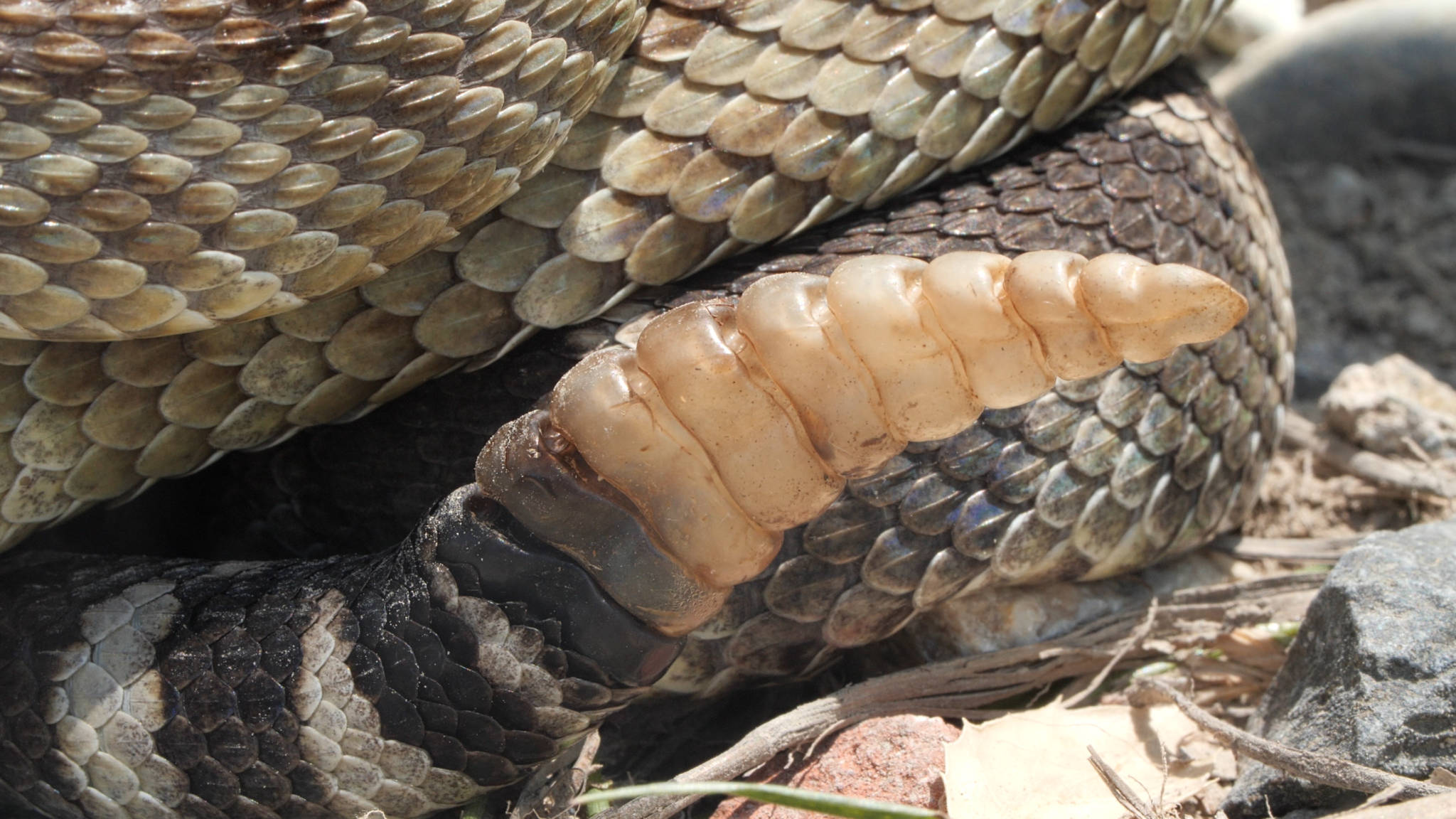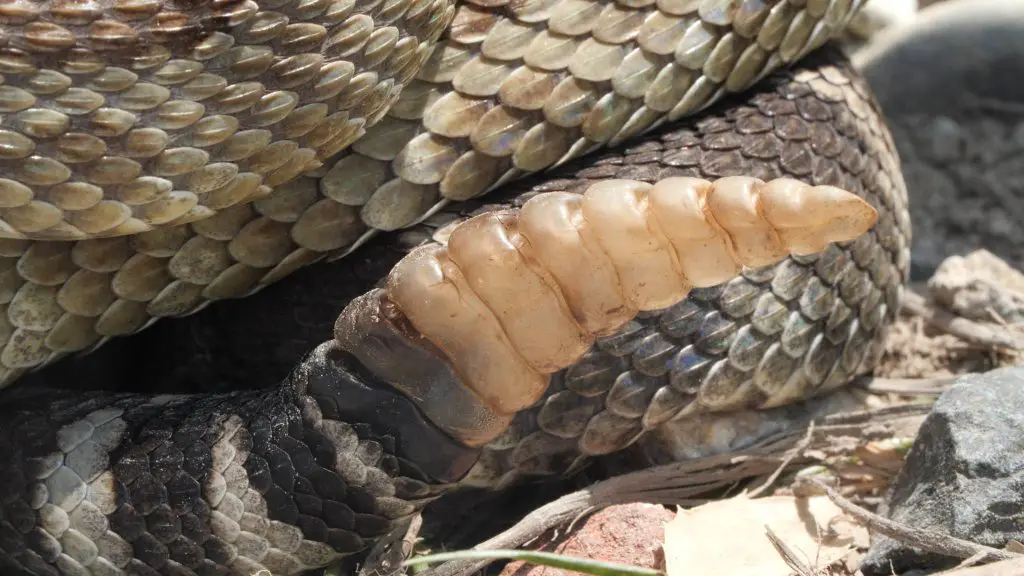Rattlesnakes are one of the most fascinating creatures on the planet, with their unique rattle being one of the most distinctive features. But have you ever wondered why these slithering serpents have a rattle in the first place?
The answer lies in their self-defense mechanism. Rattlesnakes use their rattle to warn potential predators of their presence, giving them a chance to retreat without confrontation. In this article, we’ll delve deeper into the science behind this fascinating adaptation and explore the various theories that surround it.
Rattlesnakes have a rattle as a warning sign to potential predators. When threatened, the snake vibrates its tail, causing the rattle to make a buzzing sound. This warns predators to stay away, as the snake is ready to defend itself. The rattle is made up of segments of keratin, the same material as our fingernails, and each time the snake sheds its skin, a new segment is added to the rattle.

Why Do Rattlesnakes Have a Rattle?
Rattlesnakes are one of the most feared creatures in the animal kingdom due to their venomous bites. However, what makes them even more unique is the rattle located at the end of their tail. This rattle has puzzled scientists for years, and many people wonder why rattlesnakes have a rattle in the first place. In this article, we will delve into the reasons behind this fascinating phenomenon.
Evolutionary Development of Rattlesnake Rattles
The rattle on a rattlesnake’s tail is actually a collection of interlocking segments made of keratin, the same material found in human hair and nails. The number of segments can vary from a few to over 20, depending on the species.
One theory about the development of rattles is that they evolved over time as a warning mechanism. The rattle produces a loud, distinctive sound when it vibrates, which alerts predators and other animals to the presence of the rattlesnake. This warning can be especially useful in areas where the snakes blend in with their surroundings, such as desert environments.
Another theory suggests that the rattles evolved as a form of communication between rattlesnakes. By rattling their tails, they can signal their presence to other snakes and communicate their intentions, such as mating or territorial disputes.
How Do Rattlesnake Rattles Work?
The segments of a rattlesnake’s rattle are hollow, and they are connected by a thin layer of skin. When the snake vibrates its tail, the segments move rapidly, causing them to strike against each other and create the distinctive rattling sound.
Interestingly, the number of segments in a rattlesnake’s rattle can increase over time. Each time the snake sheds its skin, a new segment is added to the rattle. This means that older snakes often have larger and louder rattles than younger ones.
Benefits of Rattlesnake Rattles
The rattle on a rattlesnake’s tail provides several benefits for both the snake and other animals in its environment. For the snake, the rattle can help to deter predators and protect it from harm. For example, if a predator approaches a rattlesnake and hears the rattling sound, it may think twice before attacking.
The rattle can also provide a warning to humans who may be hiking or camping in areas where rattlesnakes are present. By listening for the sound of a rattling tail, people can avoid coming too close to the snake and reduce the risk of being bitten.
Rattlesnake Rattles vs Other Animal Adaptations
Rattlesnake rattles are just one example of the many adaptations that animals have developed over time to survive in their environments. Other examples include camouflage, sharp claws or teeth, and the ability to fly or swim.
One key difference between rattlesnake rattles and other adaptations is that rattlesnakes can actively control when and how they use their rattle. This allows them to communicate with other snakes and warn off predators in a way that is not possible with other adaptations.
Conclusion
In conclusion, the rattle on a rattlesnake’s tail is a fascinating adaptation that has evolved over time to provide protection and communication for the snake. Whether you encounter a rattlesnake in the wild or simply want to learn more about these amazing creatures, understanding the purpose of their rattle can help you appreciate them even more.
Frequently Asked Questions
What is a rattlesnake’s rattle made of?
The rattlesnake’s rattle is made up of segments of keratin, the same material that makes up our hair and nails. Each segment is hollow and is connected to the next one by a thin layer of skin. When the snake vibrates its tail, the segments rattle against each other, making the distinctive sound that warns potential predators.
How does the rattlesnake use its rattle?
The rattlesnake uses its rattle as a warning signal to potential predators. When it feels threatened, the snake vibrates its tail, causing the segments of the rattle to rattle against each other. This creates a loud, distinctive noise that warns predators to stay away. The sound is also used to communicate with other snakes, especially during mating season.
Do all rattlesnakes have a rattle?
No, not all rattlesnakes have a rattle. Some species of rattlesnakes, such as the Mojave rattlesnake, have a very small rattle that is difficult to hear. Other species, such as the Santa Catalina rattlesnake, do not have a rattle at all. Instead, they use their tail to make a hissing sound when threatened.
What is the purpose of the rattlesnake’s rattle?
The purpose of the rattlesnake’s rattle is to warn potential predators to stay away. When the snake feels threatened, it vibrates its tail, causing the segments of the rattle to rattle against each other. This creates a loud, distinctive noise that warns predators that the snake is dangerous and should be avoided. The rattle is also used to communicate with other snakes, especially during mating season.
Can a rattlesnake lose its rattle?
Yes, a rattlesnake can lose its rattle. Each time the snake sheds its skin, a new segment is added to the rattle. However, if the snake breaks its tail or loses some of the segments, the rattle may be incomplete or absent. This does not affect the snake’s ability to defend itself or warn potential predators, as it can still make a hissing sound with its tail.
How and Why Does A Rattlesnake Produce Its Rattle?
In conclusion, the rattle is a unique adaptation of rattlesnakes that has fascinated scientists and herpetologists for years. Its primary purpose is to serve as a warning signal, alerting potential predators to the rattlesnake’s presence and deterring them from attacking. However, recent studies have also suggested that the rattle may have other functions, such as attracting mates or communicating with other snakes.
Despite its effectiveness as a defense mechanism, the rattle is not foolproof, and many rattlesnakes fall prey to predators every year. However, it remains a remarkable example of evolution at work, showcasing how animals can adapt and evolve over time to survive in their environments.
Overall, the rattle is a fascinating feature of rattlesnakes that has captivated the attention of researchers and nature enthusiasts alike. By continuing to study these elusive creatures, we can gain a better understanding of their behavior and biology, and better appreciate the intricate and complex web of life that surrounds us.


